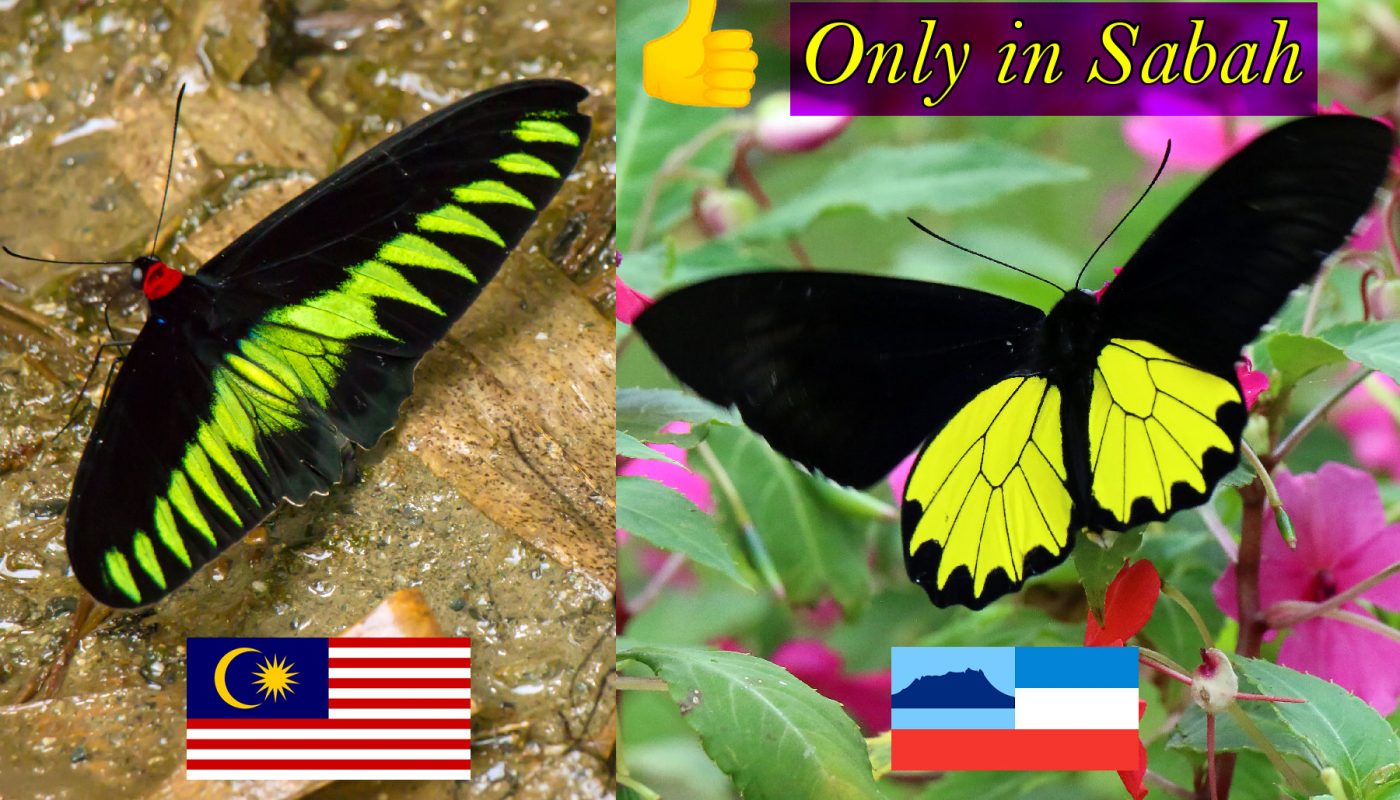Butterfly is the most beautiful insect in the world and has been a symbol of elegance, romance and beautiful transformation. Japan, India and Australia have national butterflies that represent their country. Malaysia also picks Rajah Brooke’s birdwing (Scientific name: Trogonoptera brookiana) as the poster boy due to its striking colours. Birdwings are named for their exceptional size, angular wings, and bird-like flight.
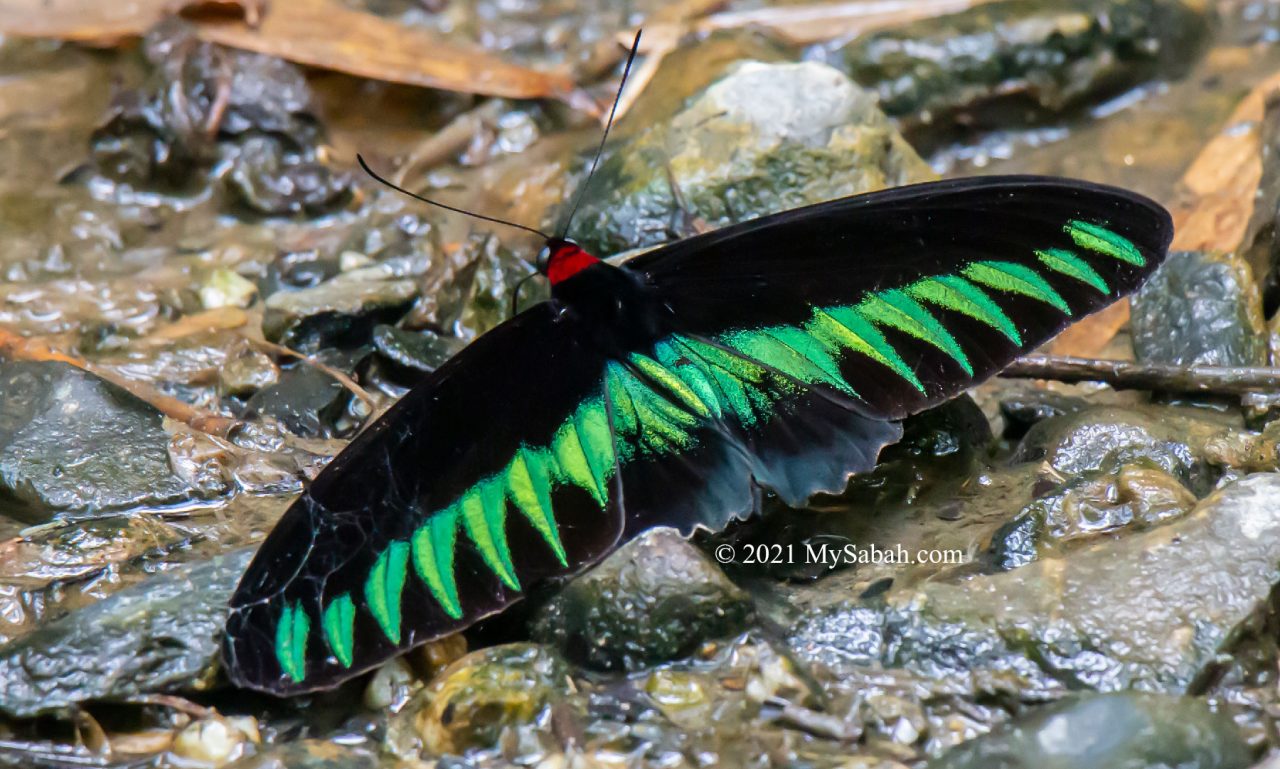
As the most well-known butterfly in Malaysia, Rajah Brooke’s birdwing has large angular wings decorated with tooth-shaped ‘electric green’ bands on a velvet black background, and a splash of metallic blue markings on the underside of its wings. This national beauty also lives in Borneo (an island shared by three countries, i.e. East Malaysia, Brunei and Indonesia).
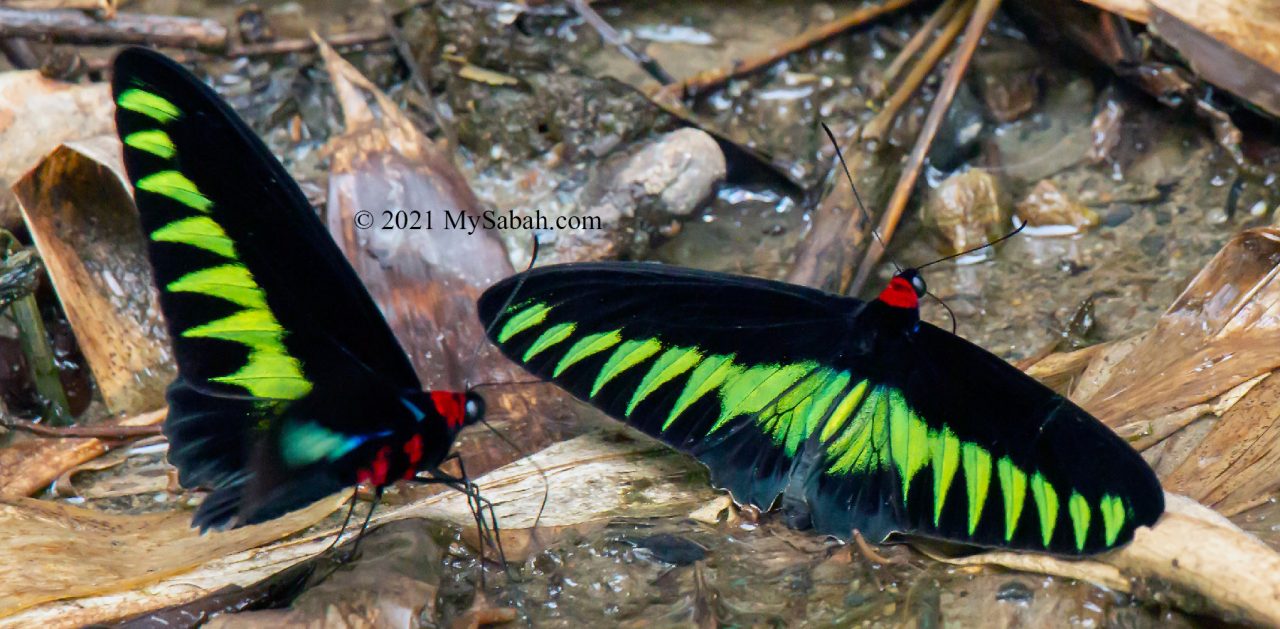
Kinabalu Birdwing, the Sabahan Butterfly
On 2 Oct 2023, Kinabalu Birdwing (Scientific name: Troides andromache) is officially declared as the Sabah State Butterfly. It’s the best candidate because: (1) its black and yellow colours are the main colours of traditional costumes of Kadazan, the largest indigenous group of Sabah, (2) Kinabalu Birdwing is only found around Mount Kinabalu, Crocker Range , and Sipitang (near Merapok) of Sabah , and (3) its bird-like flight movement reminds us of Sumazau dance. Most entomologists would agree that this endemic Borneo birdwing is truly a Sabah butterfly.
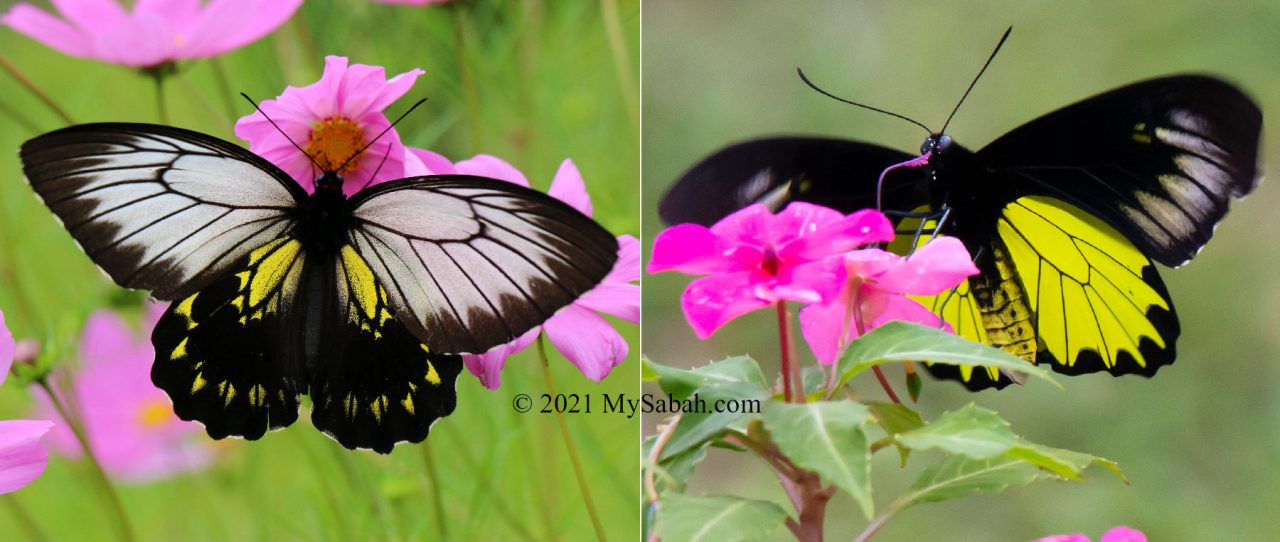
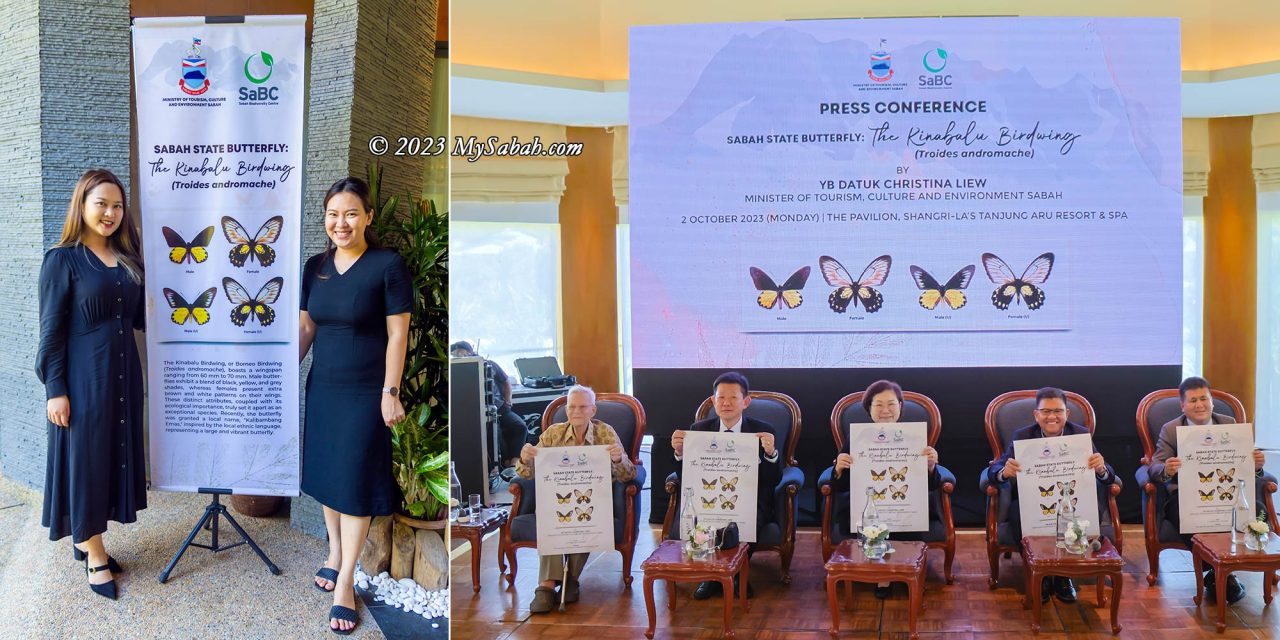
The Kinabalu Birdwing (Troides andromache) is a large (wingspan of female can reach 18.5cm (7.28 inches), the size of a small plate) but elusive butterfly, and its life remains pretty much a mystery. For example, why it chooses to live in cloud forest between 1,500 to 2,000 metres above sea level, a cold and misty environment which is harsh to most butterflies. The locals call Kinabalu Birdwing as Kalibambang Emas, which means a large and brightly coloured butterfly, in Dusun language.
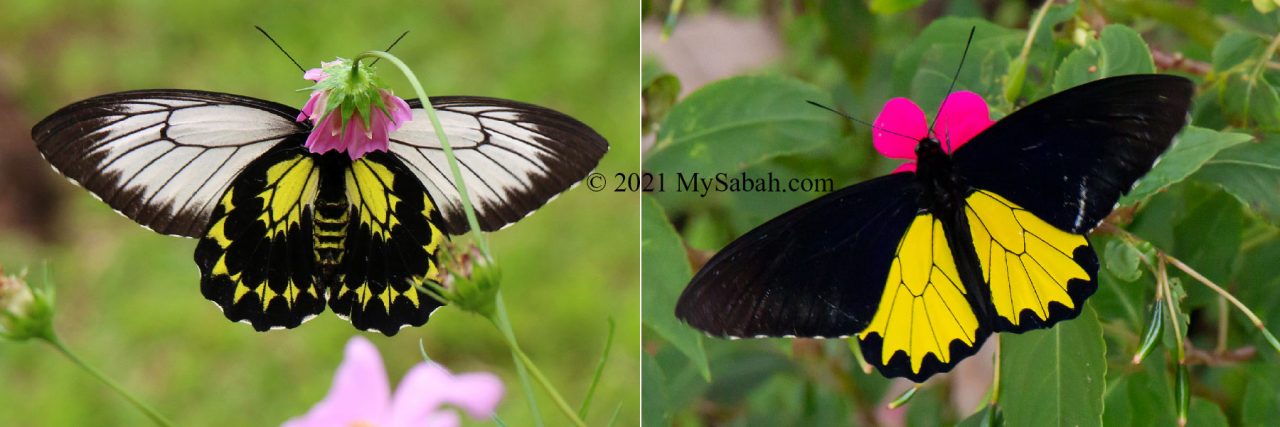
Kinabalu Birdwing has four other sister species in Borneo. All of them are sexually dimorphic (means male and female have different look).
- Common Birdwing (Troides helena)
- Golden Birdwing (Troides amphyrysus)
- Miranda Birdwing (Troides miranda)
- Mountain Birdwing (Troides cuneifera)
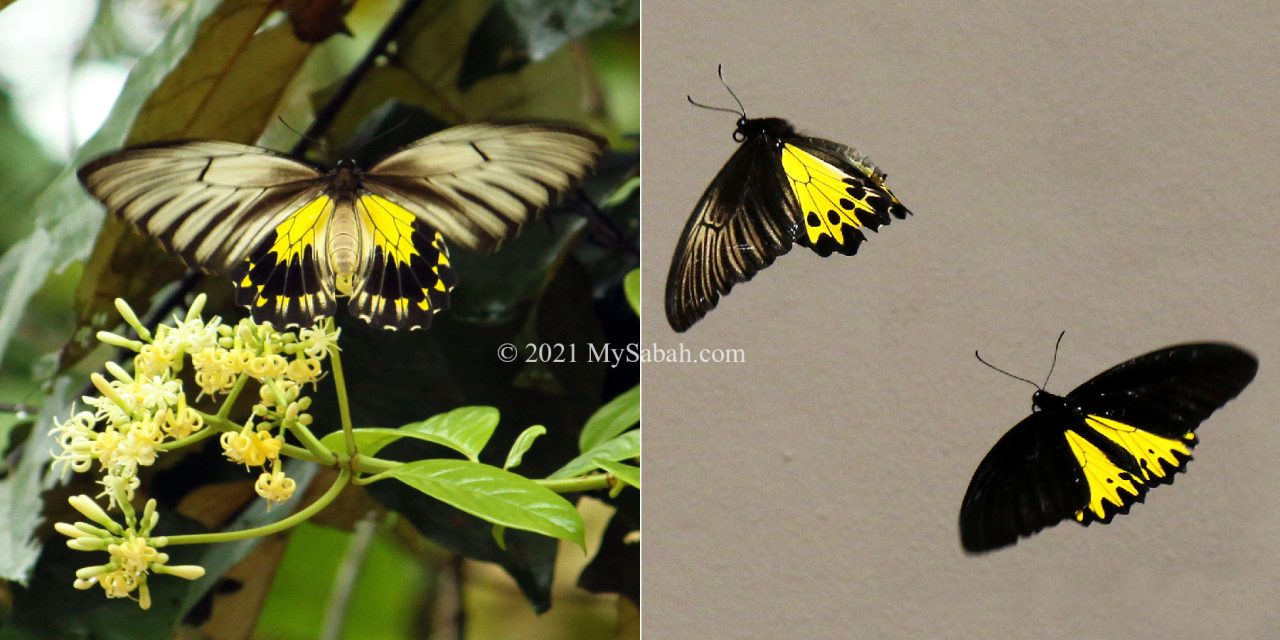
All Borneo birdwing species look the same to casual eyes. Unlike the other Borneo Birdwings, the females of Kinabalu Birdwing have white forewings with a black band on the edge of their wing. The males have black forewings and on the underside a number of white arrowhead bands.
Families of Borneo Butterflies
It has been estimated that there are about 940 species of butterflies in Borneo (from 10 families) and 81 of them are endemic (only found in Borneo). As of 2020, the family Lycaenidae has the most endemics, with 42 species, followed by Nymphalidae (15), Hesperiidae (9), Pieridae (6), Papilionidae (5) and Riodinidae (4).
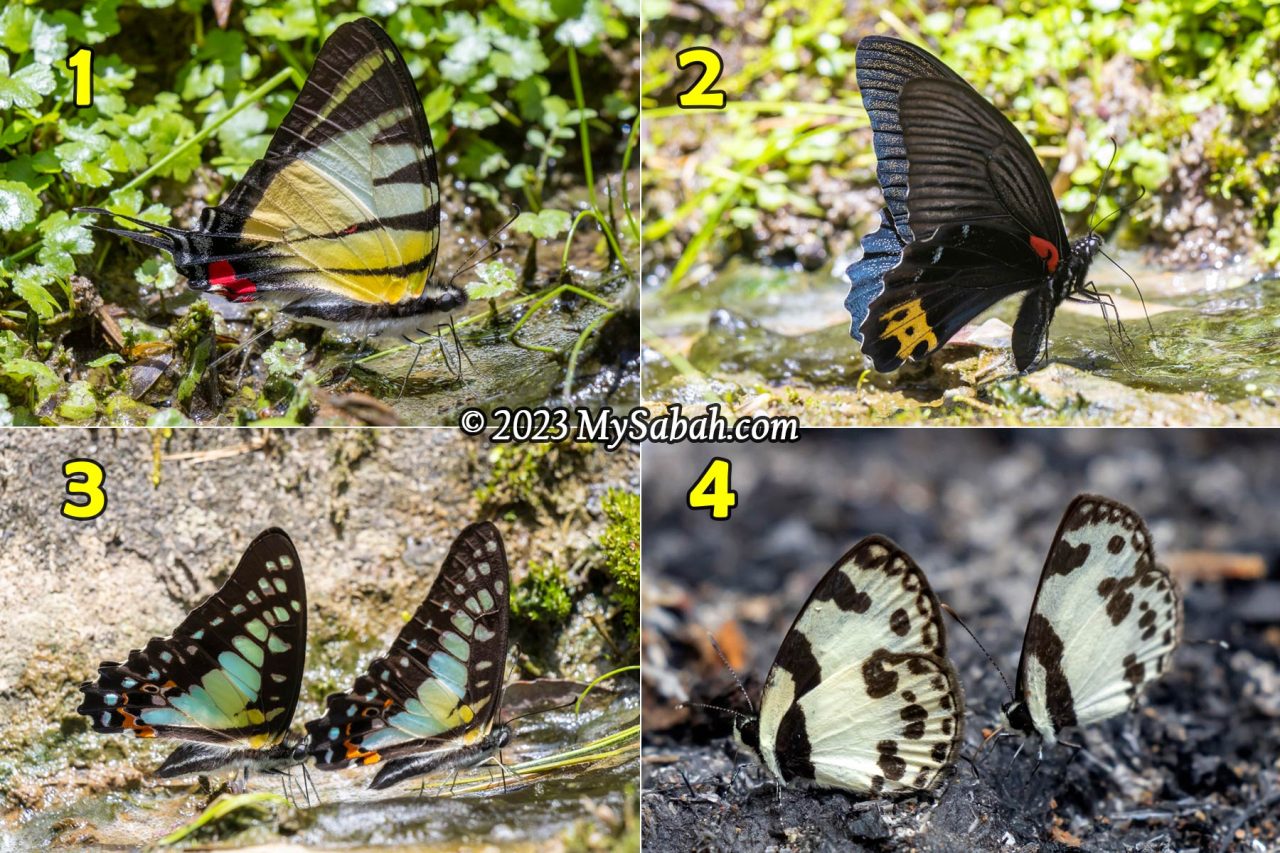
Every year in May, over 40+ Kadazandusun and Murut girls from different districts of Sabah line-up during Kaamatan (harvest festival) to compete for the State-level Unduk Ngadau title (Miss Harvest Festival). Probably we need a beauty pageant for our butterflies too. Don’t worry about the scientific names of their families and species (in brackets), just enjoy the riot of colours from these flying gems.
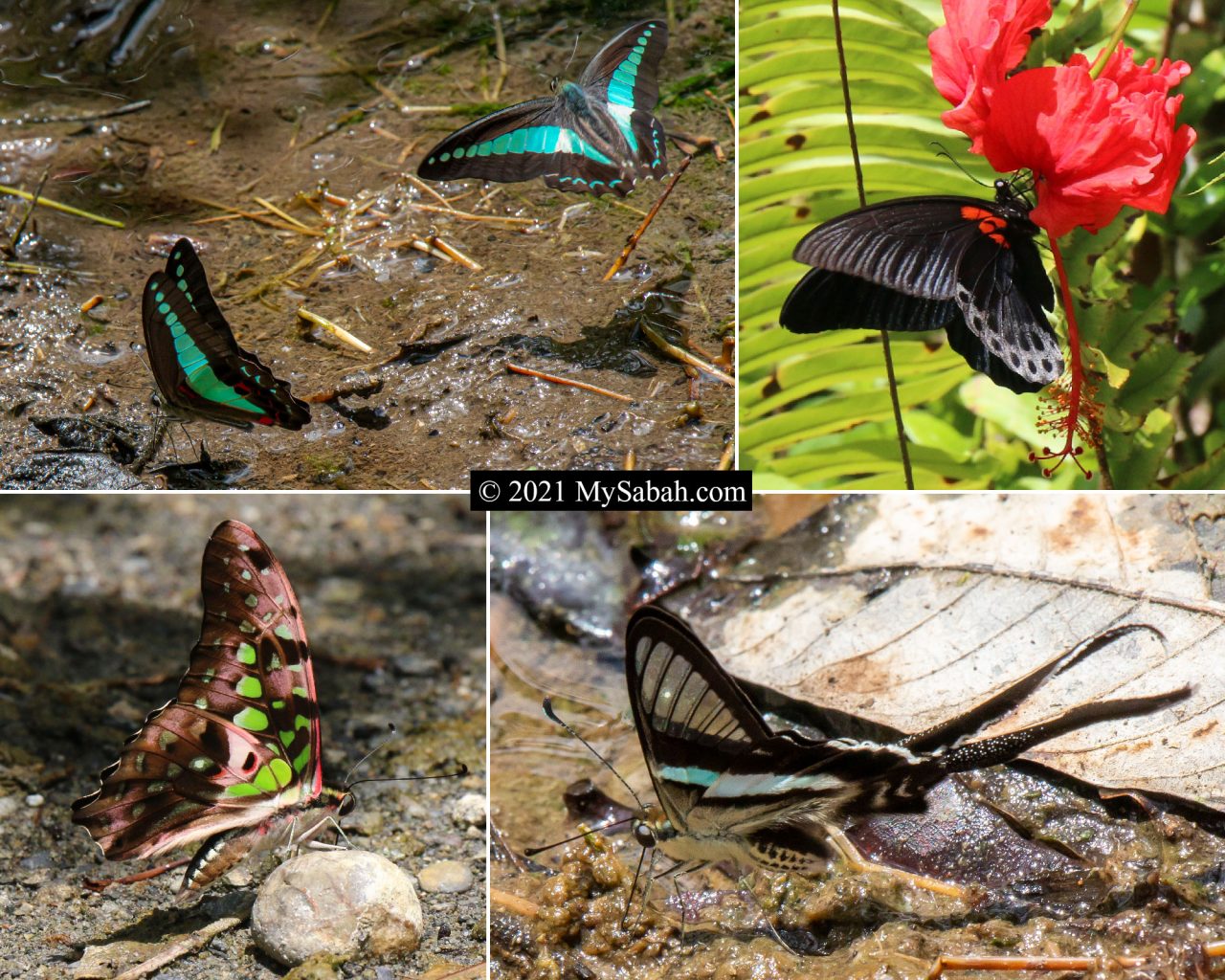
Papilionidae family has four “most”: largest, most beautiful, most studied, and well-known. There are 44 species in Borneo, which include the famous Rajah Brooke’s Birdwing and Borneo Birdwings.
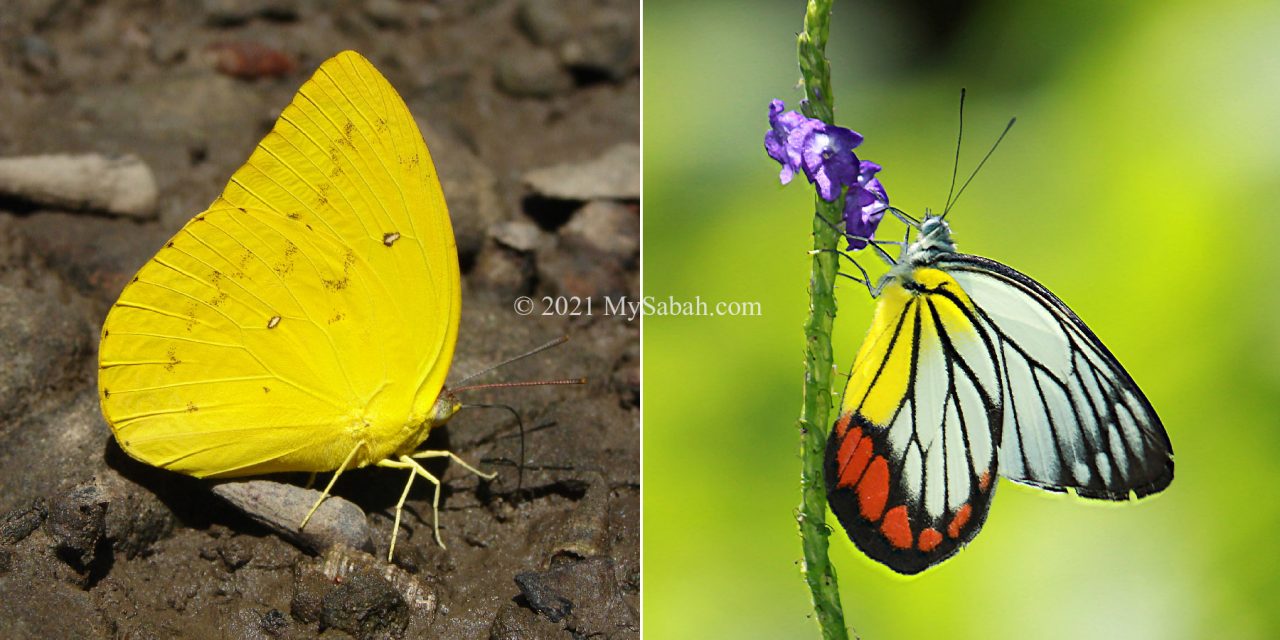
Butterflies of Pieridae family are mostly medium-sized with yellow, white or orange colour. 41 species live in Borneo. They are often called whites, yellows or sulphurs in common names according to their colours.
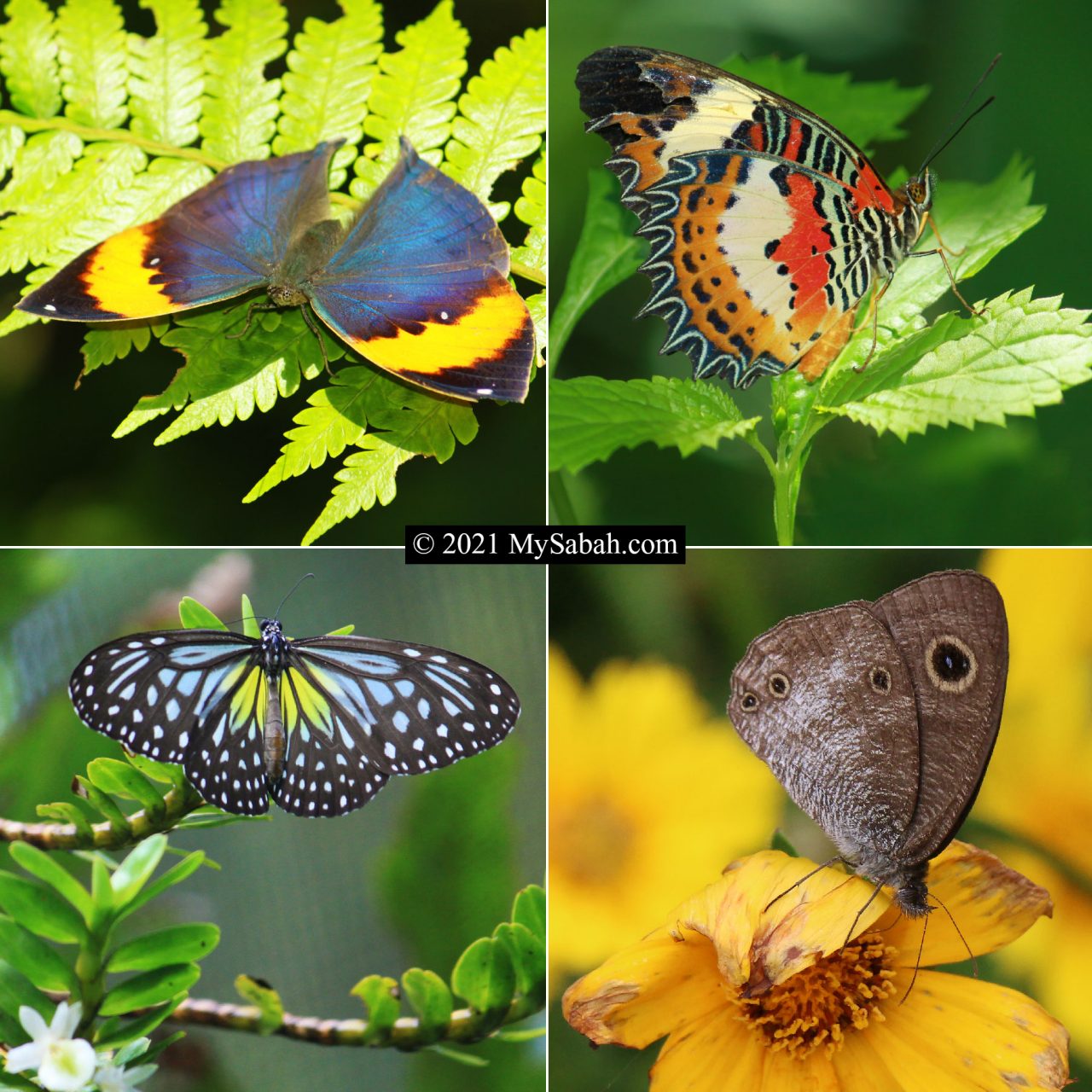
Nymphalidae is one of the largest butterfly family and there are 136 species in Borneo. They are diverse in shapes, colours and patterns. They are also known as the four-footed butterfly because their front pair of legs is non-functional. These are strange butterflies that are often found sipping on fallen fruits, plant sap and animal dropping.
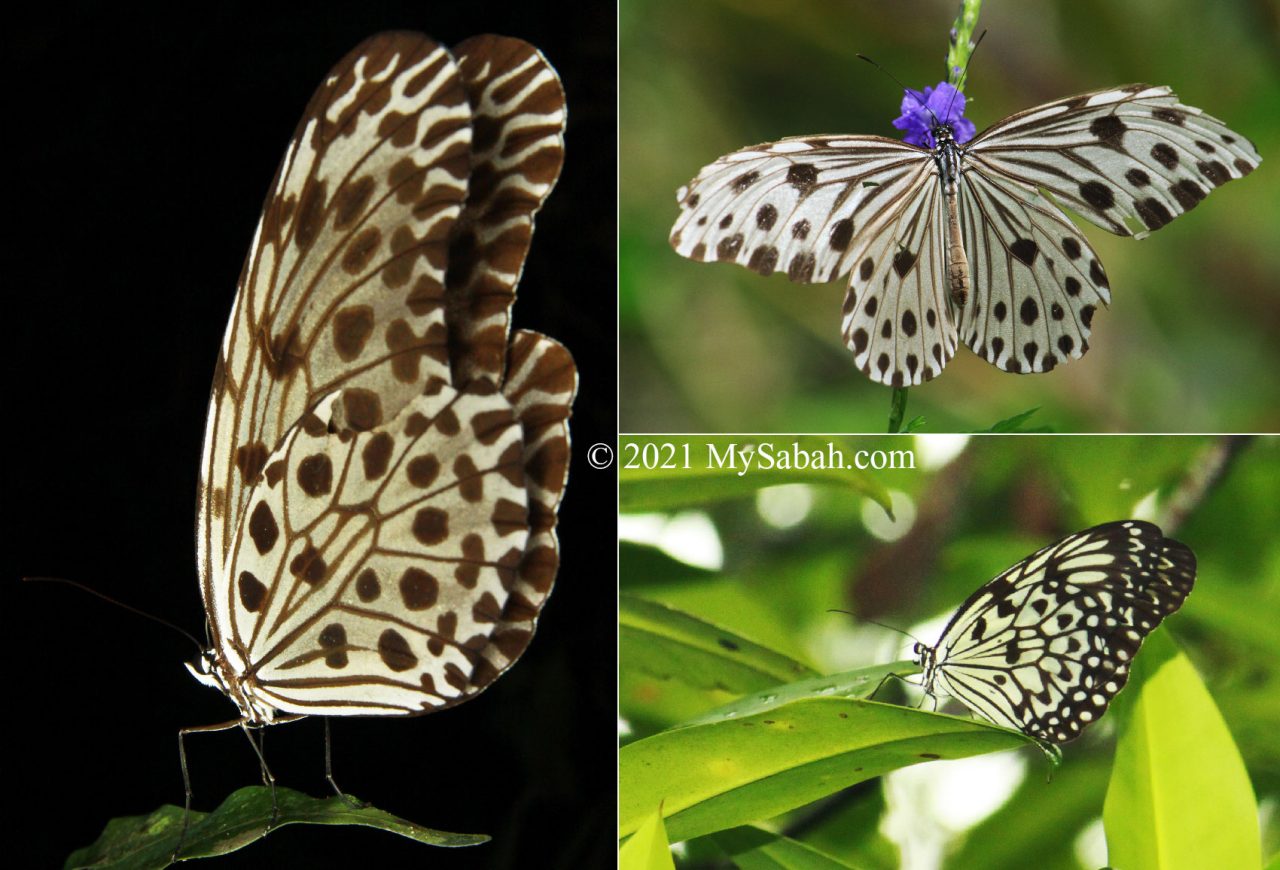
27 species of Borneo butterflies belong to Danaidae family. Many of them have black veins and numerous oval black dots on their translucent white wings. They are slow flyers and said to be the lightest butterfly in the world. For example, Ashy-white Tree Nymph (Idea stolli) is named as “Kupu-kupu Surat” (Mail Butterfly) locally because it glides gracefully in the air like a floating paper.
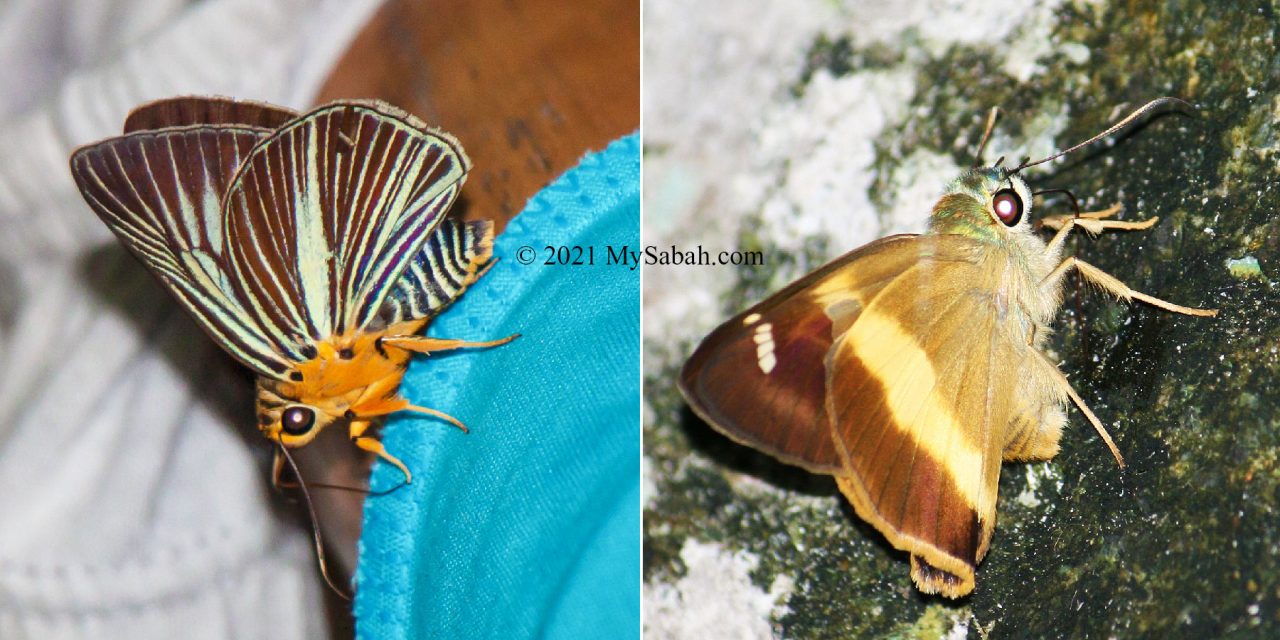
With a family of 3,000 species (over 200 species in Borneo), Hesperiidae, which is also known as the Skippers, is the largest family. These moth-like butterflies are usually small and dull coloured.
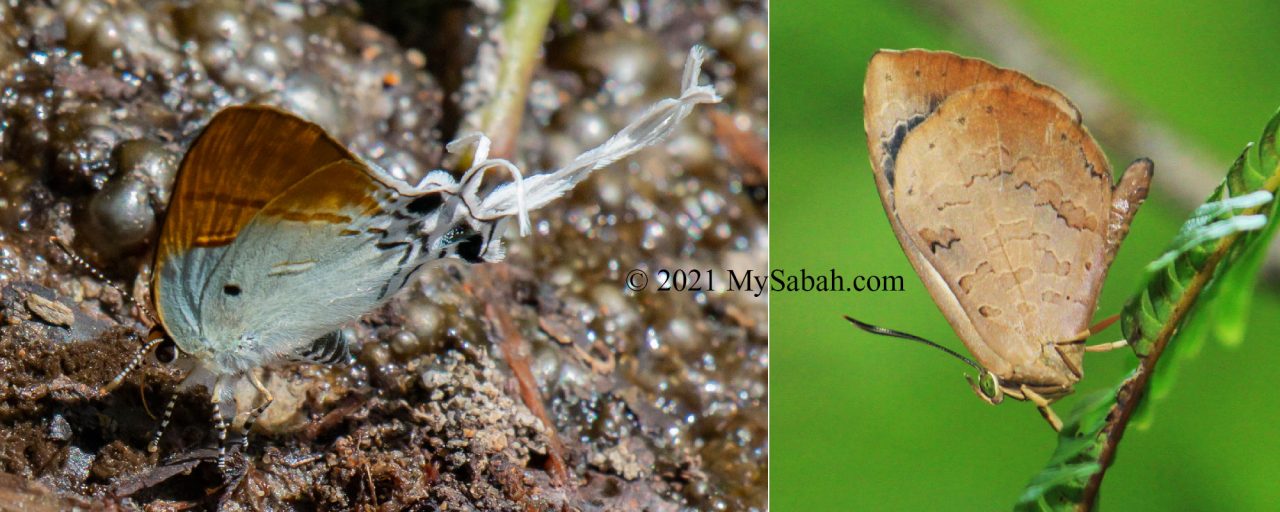
Impressed by the colours and diversity of Sabah butterflies? Kinabalu Birdwing is always my Unduk Ngadau. Who’s yours?
Differences between Butterflies and Moths
Many people can’t tell the difference between butterfly and moth. Let’s do the fun quiz below and see how good you are (ask your kids to join too). They are from Sabah and you may have seen two or more of them.
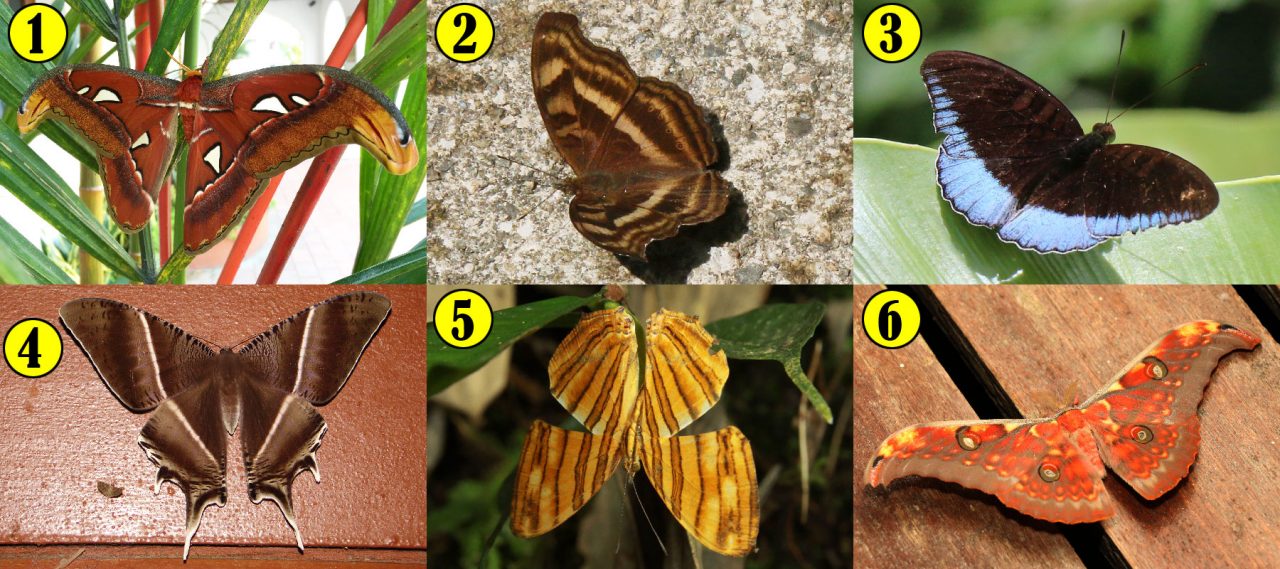
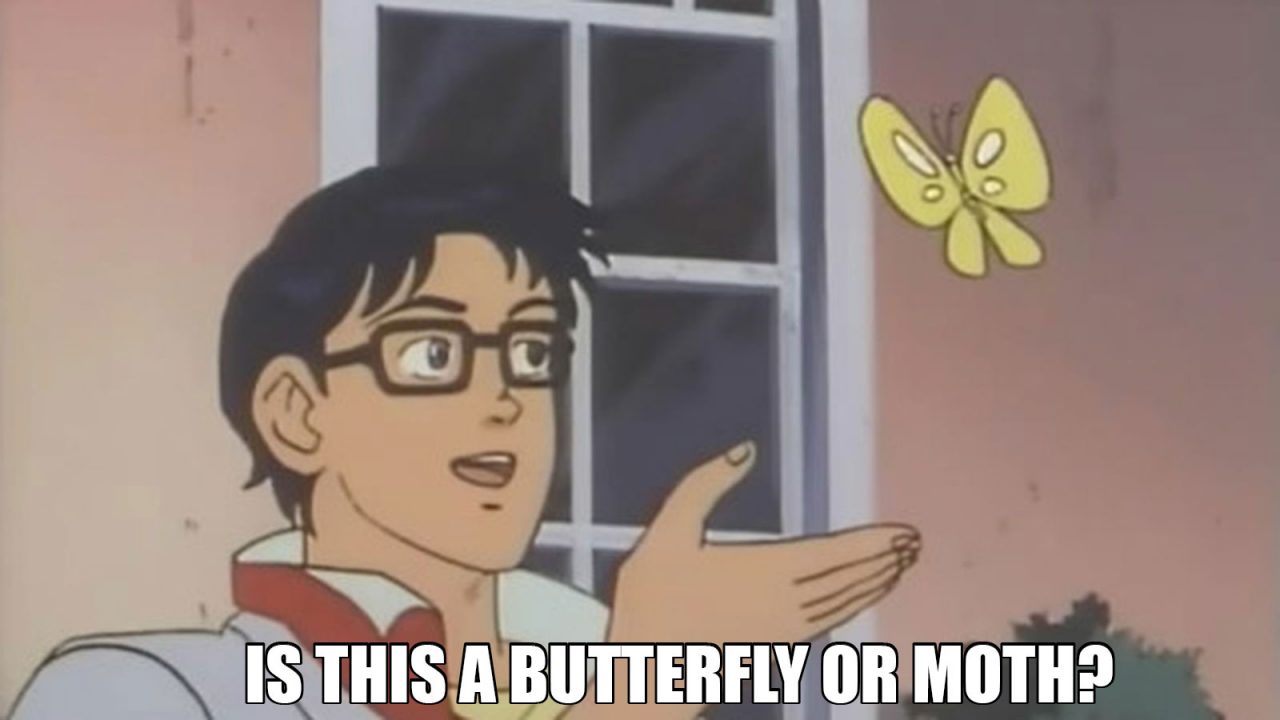
Did you get all the answers right? There are three easy ways to distinguish them:
- Butterflies are day-flying insects and moths are active at night.
- When resting, the wings of butterflies are folded upright (but butterfly outstretches its wings for sun basking sometimes), while moth’s wings are open horizontally.
- Butterfly has a pair of plain and club-like antenna. Moths are heavy-bodied with feathery antennas.
Interesting Facts about Butterflies
Here are some truths about butterflies, which are as fascinating as their colours.
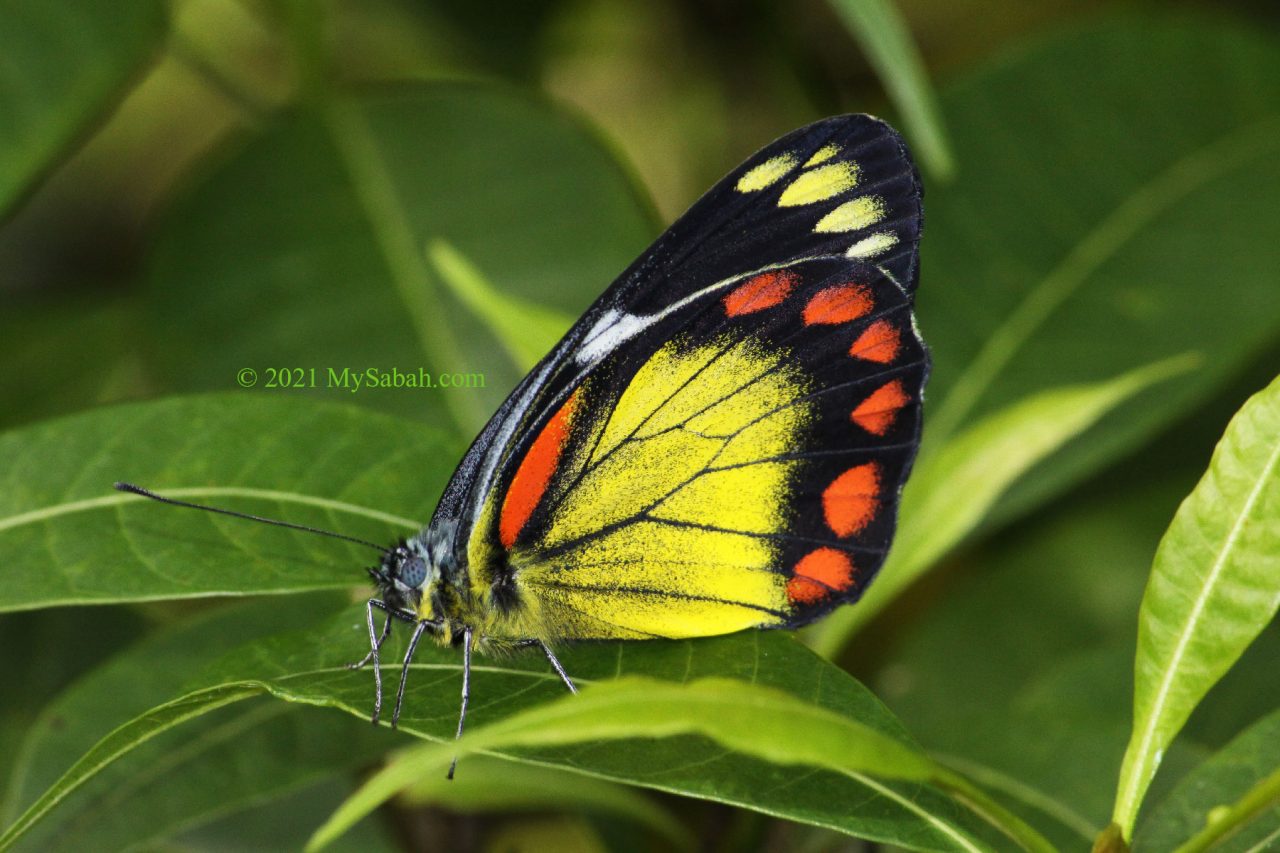
Interesting Facts about Butterflies
Here are some truths about butterflies, which are as fascinating as their colours.
- The largest butterflies of Sabah are Golden Birdwing (Triodes amphrysus) and Rajah Brooke’s Birdwing (Trogonoptera brookiana), with a forewing of 8.5 cm (3.35 inches) in length.
- Lesser Grass Blue (Zizina otis) is the smallest butterfly of Sabah, with a wingspan of only 1.5cm.
- Caterpillar has crazy growth rate. For example, the larva of Great Mormon butterfly can grow from 0.3cm to 7cm in 3 weeks. For that speed and scale, a new-born human baby can grow into a 40-foot-tall giant within a month!
- From egg to adult stage, most butterflies have a life span of only 1 to 3 months, depending on the species, some can live up to a year.
- There is a butterfly called Kadazan Lass or Bornean Sapphire (Heliophorus kiana), a Borneo endemic, so are Kadazan Small Tiger (Dodona elvira) and Kinabalu Gem (Poritia phormedon).
- Approximately five per cent (i.e. 50 species) of Sabah butterflies are toxic, so having butterflies in your stomach can be a bad experience.
- There are about 17,500 butterfly species in the world, and Peru has the most species, which is about 3,700. Iceland has 0 species.
- Butterflies smell with their feet, which have taste receptors to help them locating food.
- The world’s largest butterfly farm is located in Penang.
- Butterflies evolved from moths around 190 million years ago. Both co-existed with the dinosaurs before.
- More recent findings suggest that butterflies may have existed before flowering plants. Another chicken and egg question?
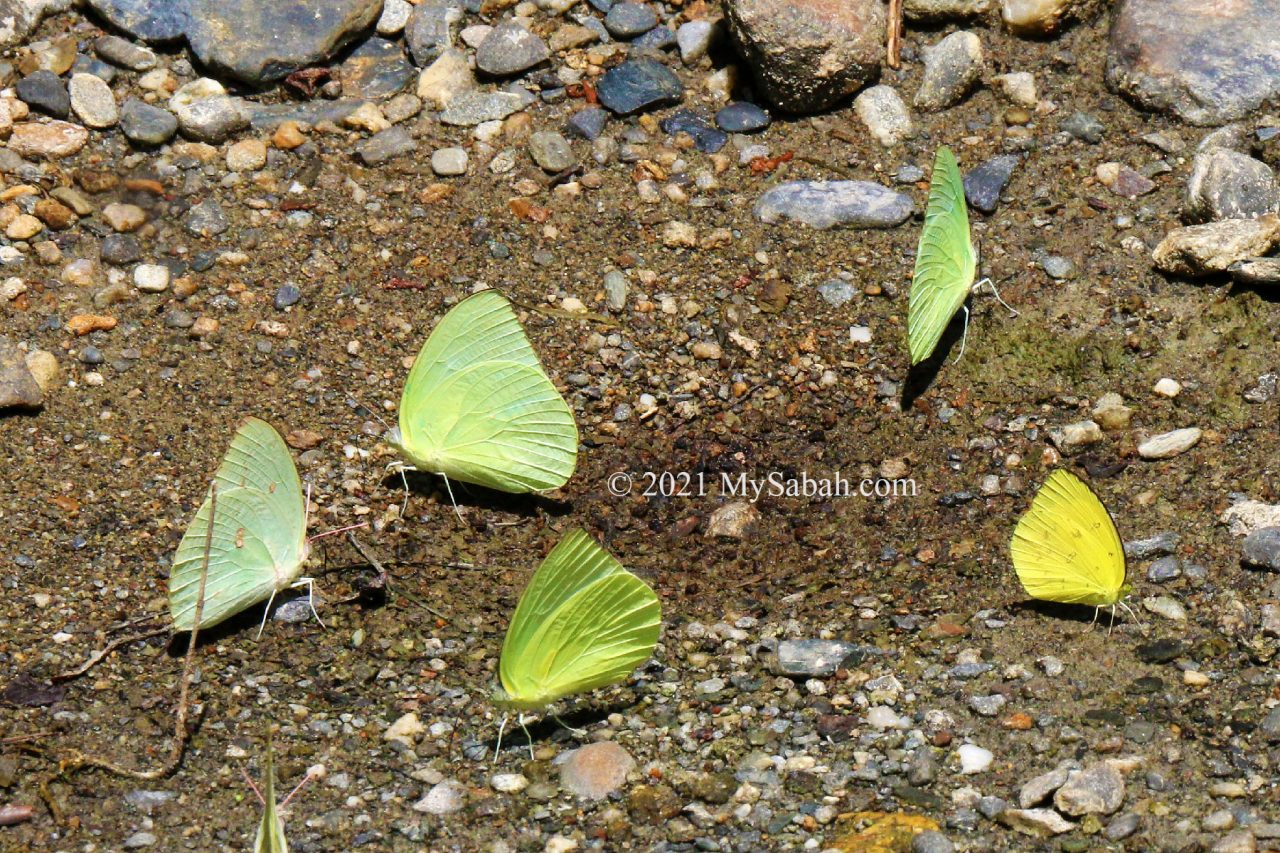
Where to See Borneo Butterflies in Sabah?
Butterflies are everywhere. In general, you can see rich variety of wild butterflies in a garden full of blooming flowers and adjacent to a forest. Areas such as Tun Fuad Stephen Park (Bukit Padang), Crocker Range Park and Kinabalu National Park (625 species) are good places to start butterfly watching. If you want to see a lot of rare butterflies with the least effort, you can visit a butterfly garden (entry fee applied). Note: most butterflies in captivity have broken wings, not so great for photography.
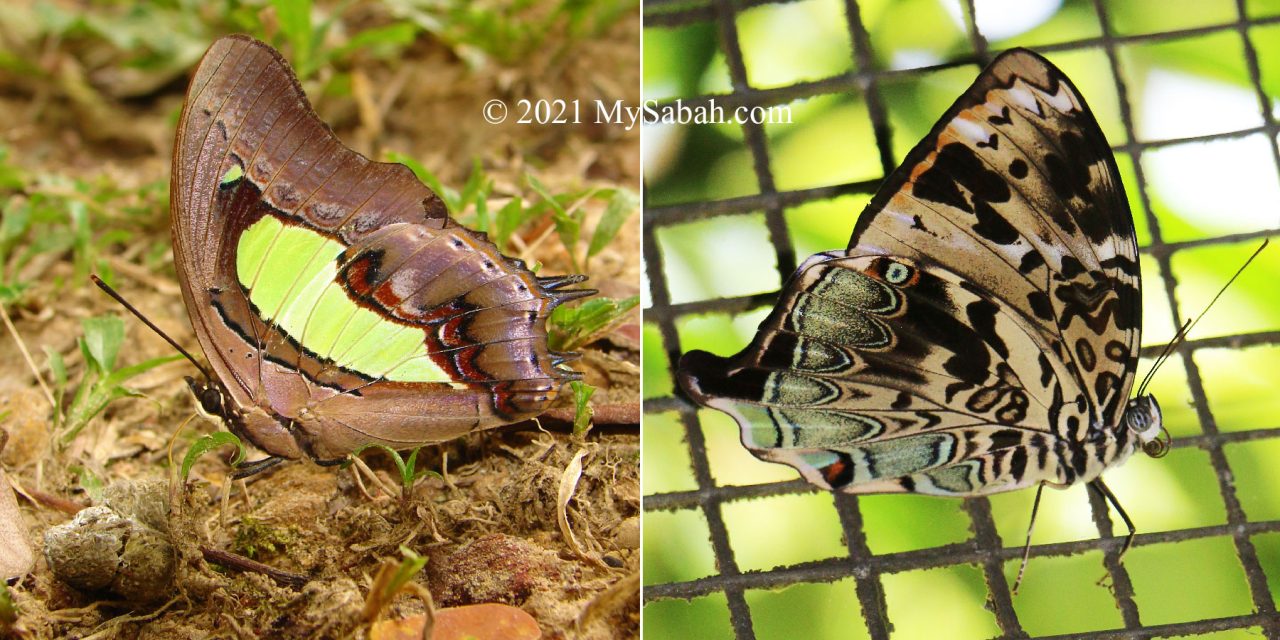
1. Poring Hot Springs
Most visitors aim for soaking in the popular sulphur springs and skip butterfly farm inside the park. Poring Butterfly Farm is started in 1989 with 4 main components, namely, exhibition gallery, large enclosure, breeding room and nursery of larvae’s food plant. Only the first two are open to public. You can see the specimens of most, if not all, Borneo endemic butterflies in the gallery. There are information panels and insect display boxes along the walkway. No guiding service is provided.
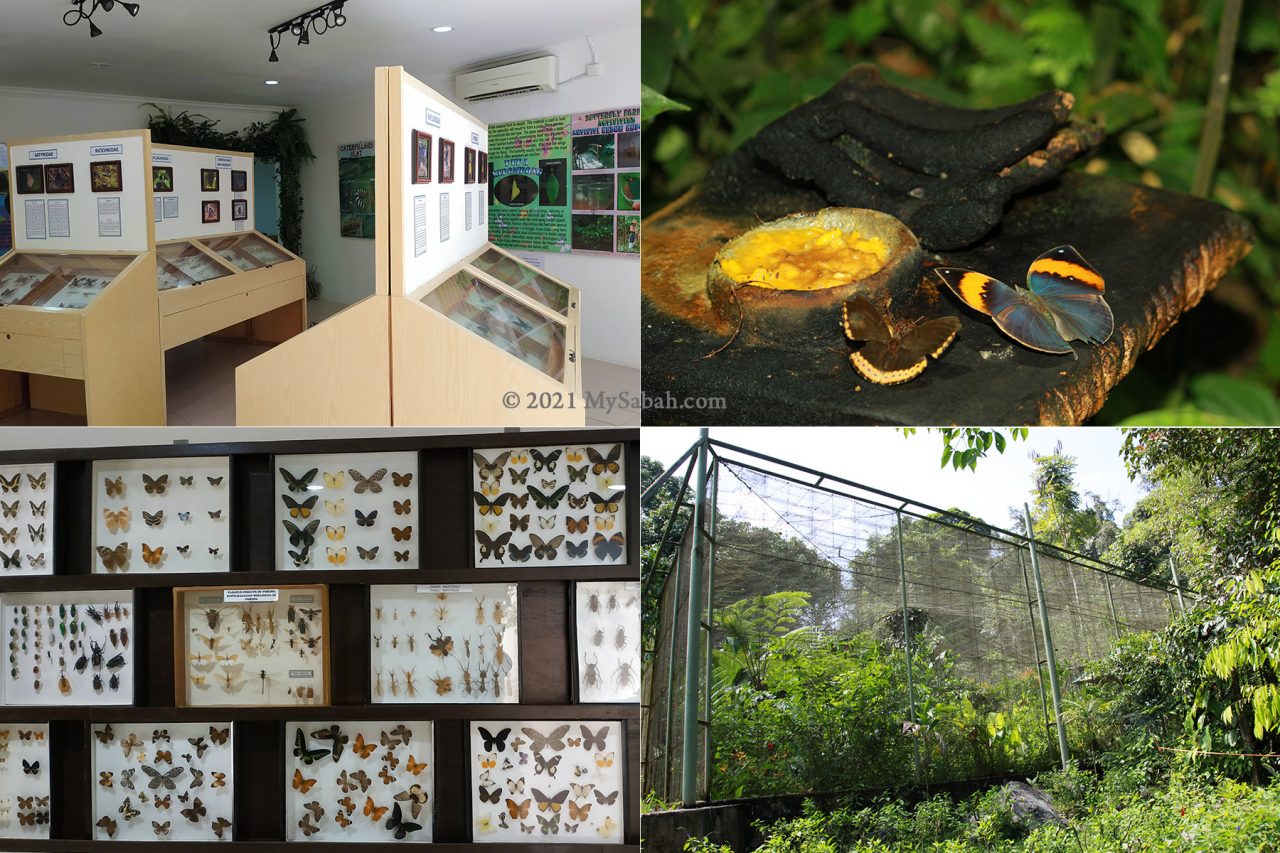
The garden and streams outside the enclosure are the magnet for wild butterflies from pristine forest nearby. Besides butterflies feeding among the flowers, you can find group of butterflies (majority are male) congregate at stream banks for puddling, a drinking party for butterflies to sip natural salts from the mineral-rich creek, which contains vital nutrients for their reproduction. Rajah Brooke’s Birdwing prefers to do this in shady area.
2. Kipandi Butterfly Park (by appointment only)
Kipandi Butterfly Park is similar to Poring Butterfly Farm, but with more extensive and exotic collection of local and foreign insect specimens in their exhibition hall. The visitors can check out the pupa and caterpillars in their nursery. This site offers better experience for an education tour because they also have native orchids and pitcher plants in their garden. However, visitors need to book an appointment prior to the visit. You can try calling or texting (Whatsapp) their phone numbers at +60 13-8739092 (Mr. Stevan Chew, Operation / Park Manager) or +60 19-5302298 (Mr. Linus Gokusing).
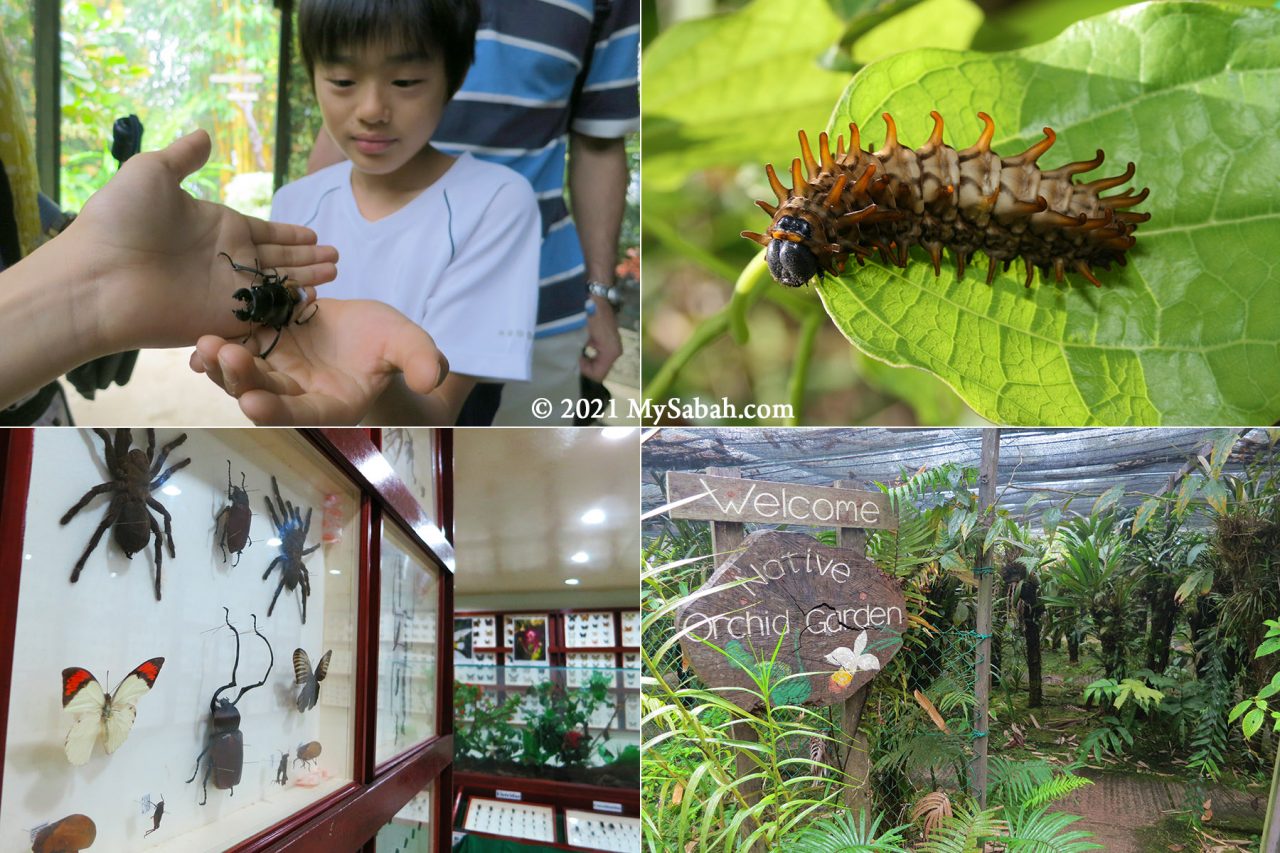
Best Time for Butterfly Watching
Butterflies are more active when there is sunlight, so 9am to 3pm during sunny day would be the most suitable time for butterfly watching in Sabah. Most butterflies need an air temperature of above 15°C (60°F) to fly. If they get too cold, they are unable to fly, so in cold days, you would see them rest on a leaf and bask with their wings out-stretched like a solar panel. Nevertheless, some species such as Kinabalu Birdwing can remain active in a cool and misty day.
Conservation of Borneo Butterflies
Like other wildlife, butterflies need an undisturbed habitat and reliable food sources to survive. Global warming, the use of pesticides in agriculture, and forest clearance threaten their well-being. In 2018, Kinabalu Birdwing was listed as ‘Vulnerable’ on the International Union for Conservation of Nature (IUCN), as a result of the large-scale forest clearance in Pinosuk Plateau (around Mesilau) of Mount Kinabalu. Therefore, some proactive measures are needed in place to prevent them moving toward extinction.
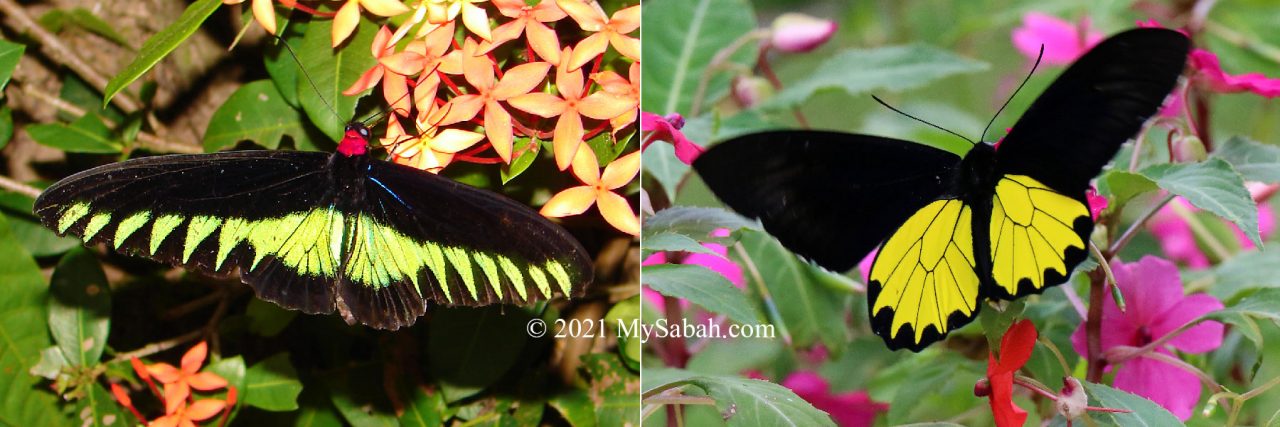
Protection by Malaysian Law
Butterflies are fun to watch but you could be caged for catching a protected species. About 30 Malaysian butterfly species (e.g. Rajah Brooke’s Birdwing, Borneo Birdwings, Ashy Tree Nymph) are categorised as the fully protected species in Wildlife Protected Species Act 2010 [Act 716]. On 1 September 2023, the butterfly species was listed as a Protected Biological Resource under the Sabah Biodiversity Enactment (Amendment) 2023. You can be fined up to RM30,000 or jailed for up to one year, or both, for capturing, collecting, or trading them illegally (without a permit or license).
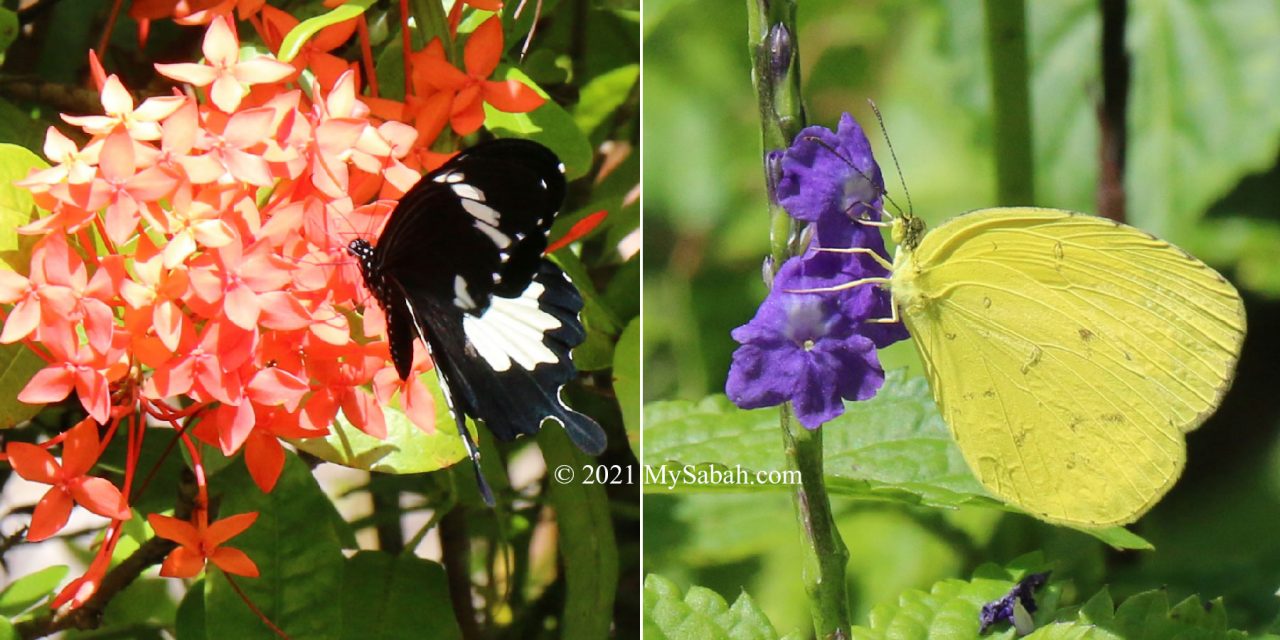
Feeding the Butterflies!
Why not inviting these little fairies into your backyard? You can plant plenty of flowers to conserve and attract these colourful visitors. Evergreen plant such as Red Javanese Ixora (Todong Periuk), Indian Snakeweed (Bunga Malam), Red hot cat’s tail (Ekor kucing) and Hibiscus are some of the common nectaring flowers of butterflies. Or just plant any flower you love, the more variety, the better.
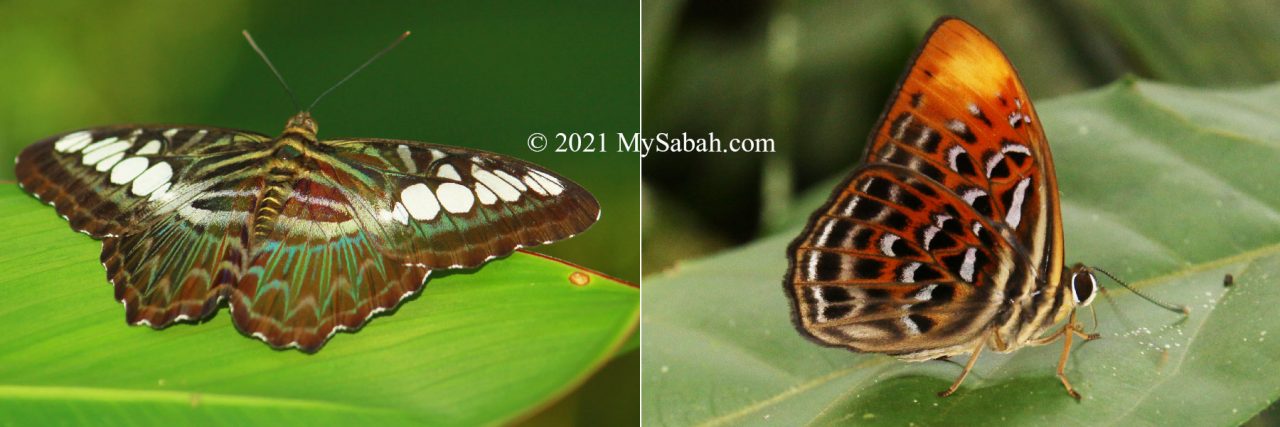
You can target different types of butterflies with selected flowers. For Kinabalu Birdwing in highland, Orange balsams (Impatiens walleriana). Yellow daylilies (Hemerocallis spp.), Mussaenda, Lantana, Busy Lizzie, Poinsettia (Eurphorbia spp.) and Hibiscus (Rosa sinensis) are the flowers they feed on. It’s even superb if you cultivate Aristolochia foveolata, a liana that can serve as a foodplant for larva of Kinabalu Birdwing. FYI, Swallowtail & Birdwing Butterfly Trust and The Rotary Club of Kota Kinabalu are training homestay operators in Kampung Kiau to plant this liana.
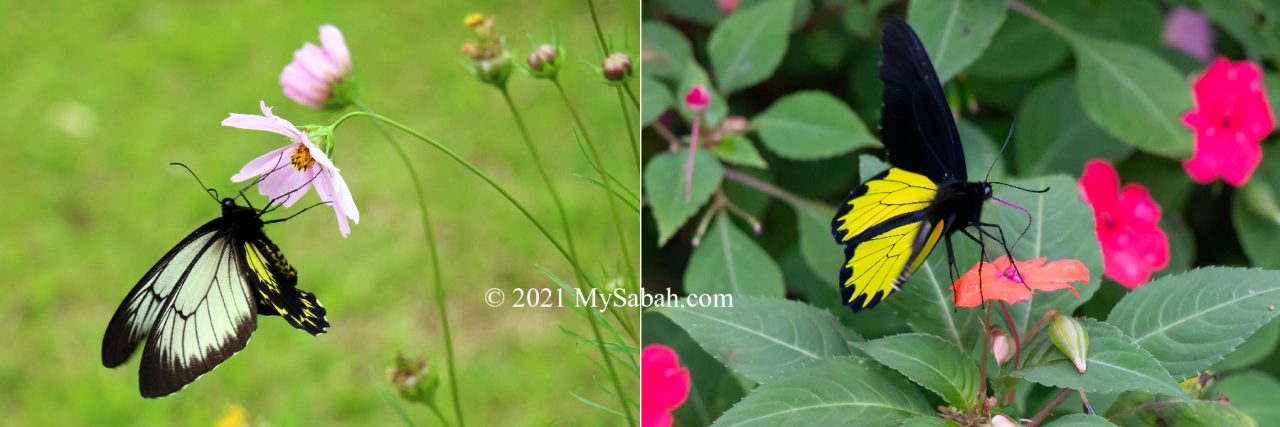
References & Acknowledgement
- Stephen Sutton, Corné F. H. van der Linden, Tom M. Fayle, Kalsum M. Yusah, Alim Biun, Arthur Chung, Paul Foronda, Saiheng Taradas and Bart P. J. Burger. Troides andromache Staudinger 1892: The Natural History and Conservation of the Kinabalu or Borneo Birdwing Butterfly. The Malayan Nature Journal, 81st Anniversary Special Issue 2021.
- Butterflies of Sabah poster by Sabah Forestry Department, published in May 2022
- Marcella Gohun, Dg. Fazrinah A.D., Nurul Aqidah l., Razy Japir, Arthur Y.C. Chung. A Compilation of Bornean Endemic Butterflies. Sabah Forestry Department, Dec 2020.
- Sherell Jeffrey. How society romanticises butterflies. Daily Express, 7 Feb 2021
- Arthur Y.C. Chung. Butterflies of Borneo. Research Gate, Sep 2019
- Fatimah Abang. Butterflies of Malaysian Borneo – A Pocket Guide. Universiti Malaysia Sarawak, 2006.
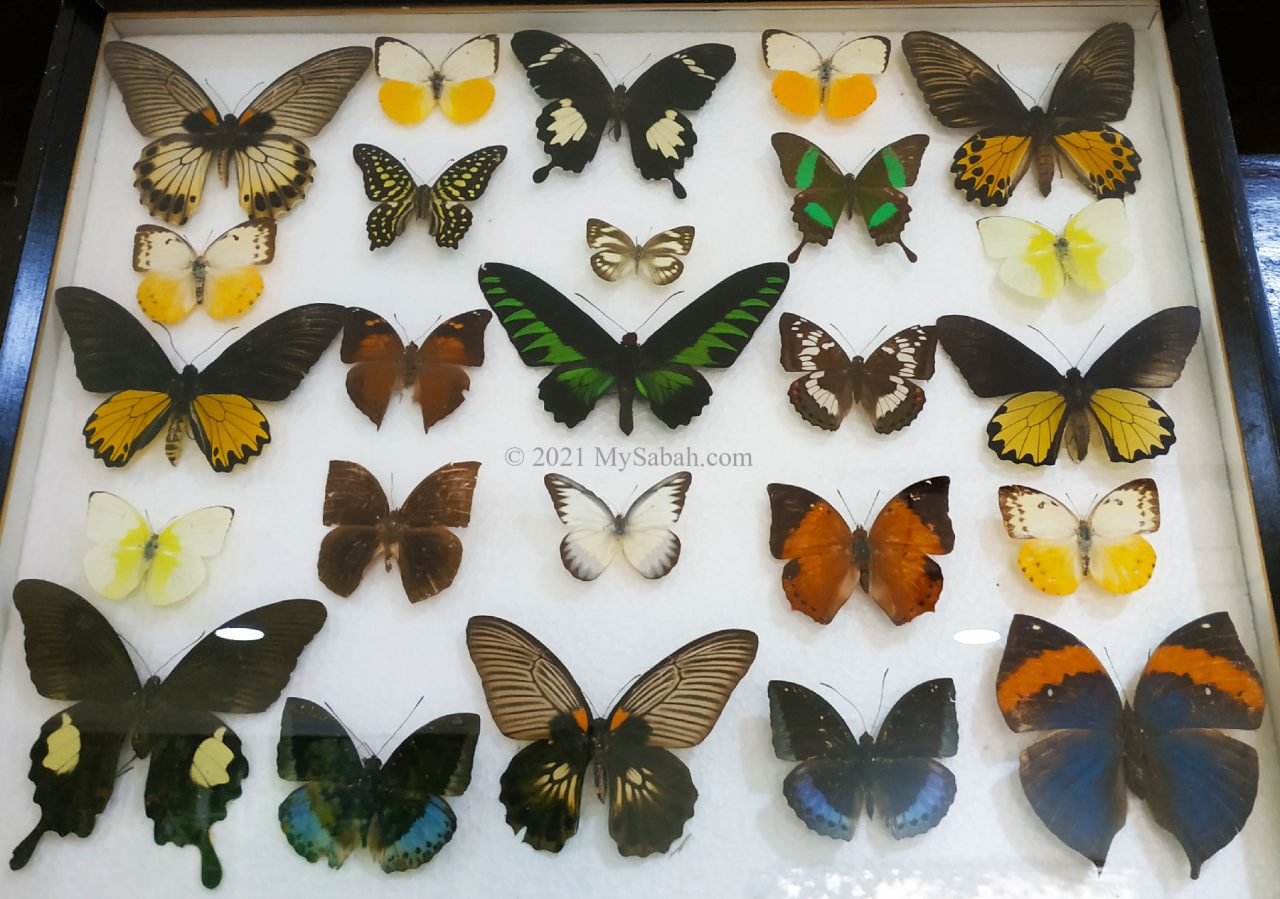
Special thanks to members of Butterfly of Borneo Facebook Group (especially Potanthus Ttp), Dr. Stephen Sutton, and Dr. Arthur Y.C. Chung for the identification and information on Sabah butterflies. (Disclaimer: This acknowledgement doesn’t imply that they adopt this article)
Photos taken in Sabah, Malaysia Borneo
